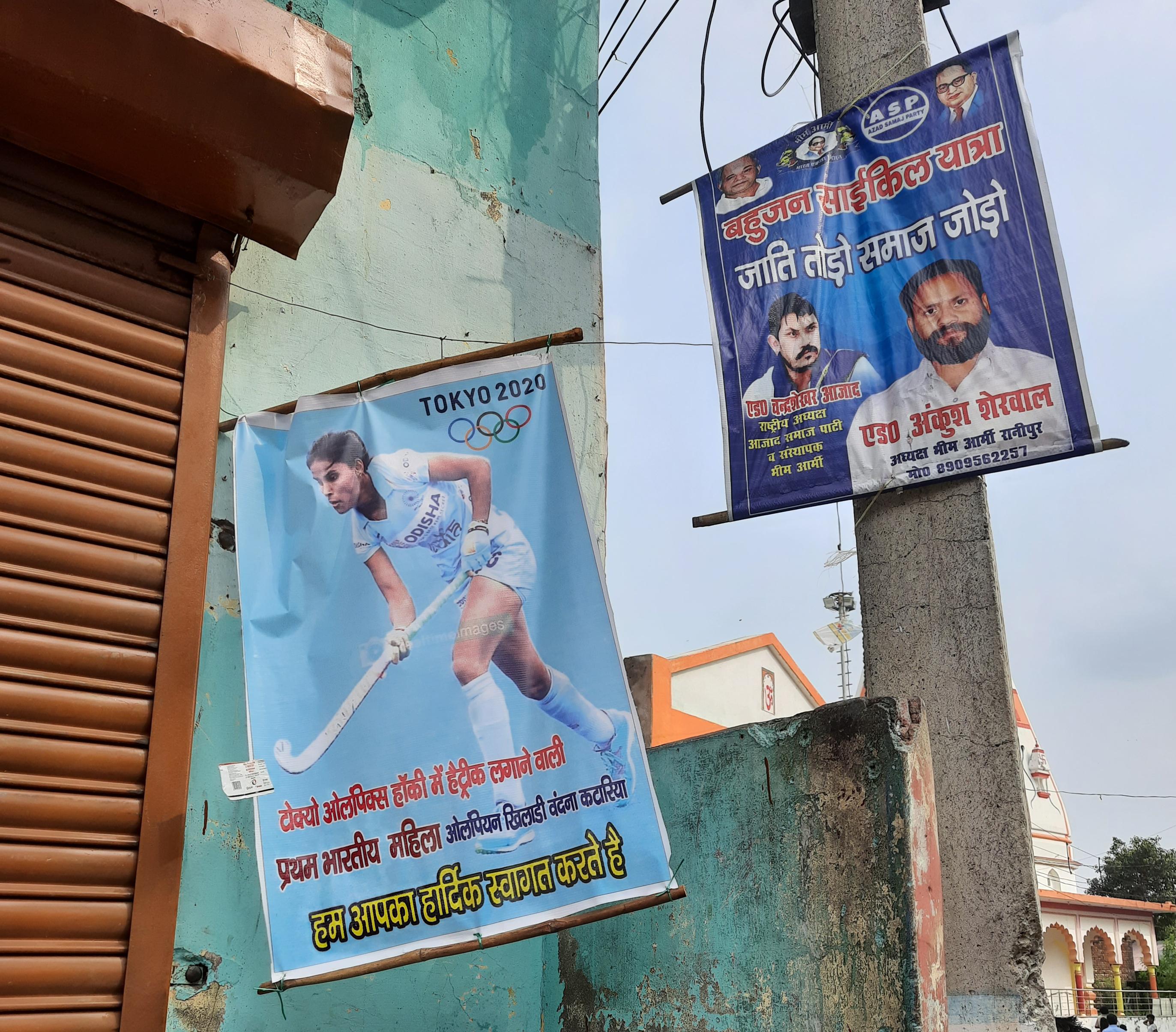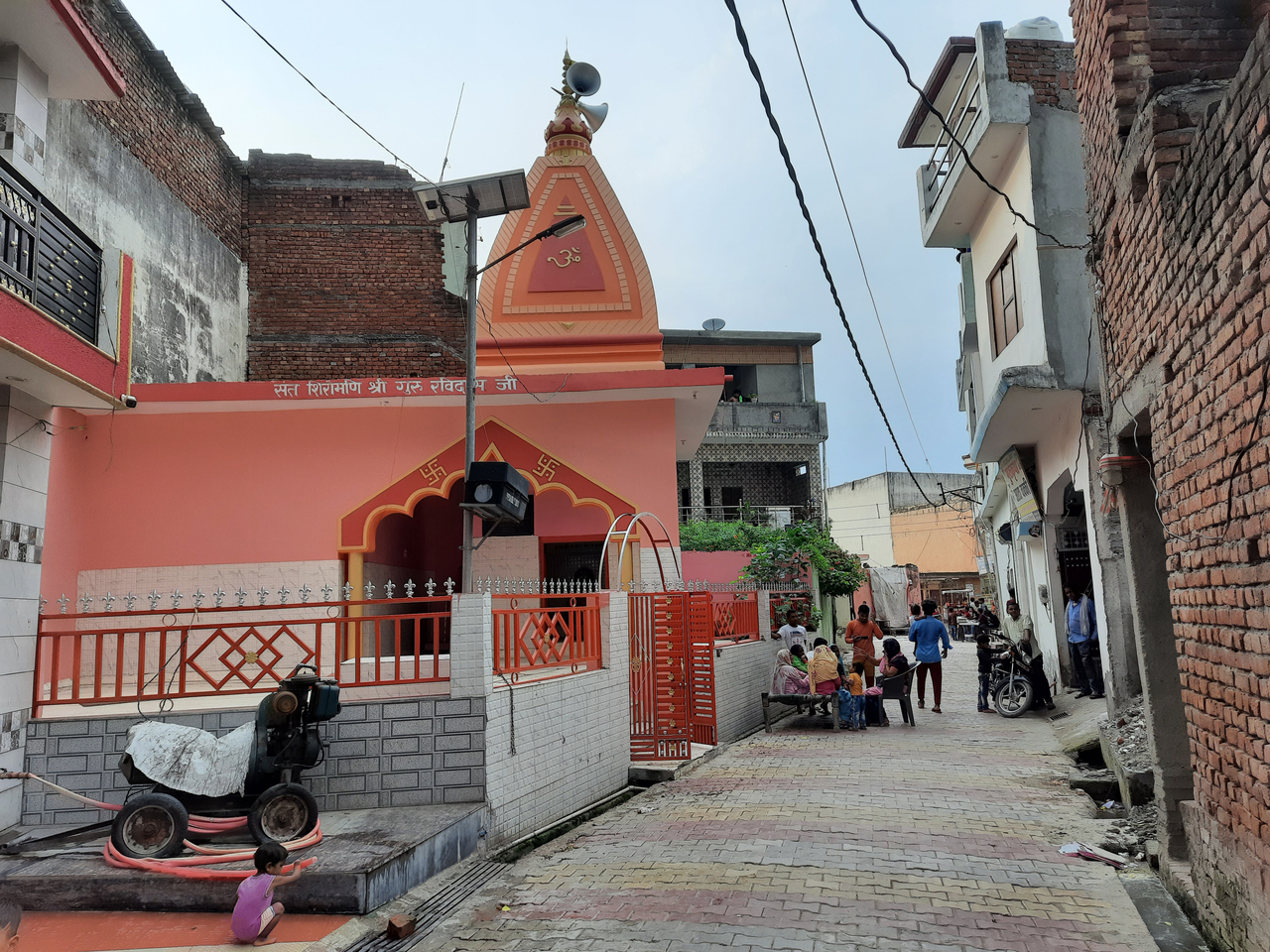HARIDWAR, UTTARAKHAND - A red carpet lined one of Roshnabad's narrow paved paths. Flanked by open drains on both sides, the lane was adorned with polyester fabric fixed to poles along the way, its imprinted vine pattern billowing in the breeze.
The set-up was meant to welcome Uttarakhand chief minister Pushkar Singh Dhami, who visited the village on Aug 12 to felicitate an illustrious resident - Ms Vandana Katariya.
Ms Vandana, a 29-year-old hockey forward, had in July become the first Indian woman to score an Olympic hat-trick at the Tokyo Olympics. Her team narrowly missed winning a bronze medal, but won adulation from millions of Indians for its grit.
But like the fabric that sought to hide empty plots overrun with litter, the set-up also hid an ugly reality in this village - casteism.
The Katariyas are Dalits, a marginalised community of former untouchables at the bottom of India's caste hierarchy that still retains its hold over Indian society.
In Roshnabad, the Pals form the majority in the village of more than 5,000 . Even though classified as Other Backward Classes, the Pals claim a higher ranking than Dalits in India's caste system.
On Aug 4, seconds before India lost to Argentina in the Olympic women's hockey semi-final, the Katariyas claimed some locals burst crackers outside their house to celebrate India's loss. In alleged remarks that shocked the country, the men said the team had lost because it had "too many Dalit players". They reportedly even took off their T-shirts and danced, besides chanting slogans supporting Argentina.
Three locals - two Pal brothers and a Rajput (an upper caste group) - were arrested for this incident and are currently out on bail. The police said investigations are ongoing.
Mr Chandrashekhar Katariya, 40, Ms Vandana's elder brother and the one who filed the police complaint, said he was not sure what had provoked the upper caste men. "Maybe it is because Dalits are rising," he told The Straits Times.
The Pal family, who are neighbours of the Katariyas, denied the charges and said the two brothers had been framed by the Katariyas.
One of the Pal brothers, Vijay, has played hockey for the state of Uttarakhand and there have been insinuations of a history of personal rivalry between the two families.
The intricacies of this episode aside, casteism remains a reality in Roshnabad, as in other parts of the country, so much so that it can tarnish a rare euphoric moment of Olympic glory.

Casteism, while not always evident to the uninitiated, can reveal its ugly spectre in India when Dalit ascension challenges entrenched social set-ups - such as possibly in the case of the Katariyas, who have prospered in recent years - or in instances where mundane disputes take on casteist overtones.
This happened on June 7 when a tiff around a cricket game being played by Dalit children rapidly degenerated into casteist violence as they were allegedly beaten and abused by certain members of the Pal community. As Dalit elders rushed in to help, the matter took a more violent turn.
Both sides went to the police later, filing complaints against each other. The report filed by a Dalit family involved in the dispute claimed that Pals had hurled casteist abuses at the children, even saying that "those who repair shoes do not deserve to play cricket", and had beaten them up.
Many Dalits work as cobblers, one of the several low-paying professions they are forced to adopt. On the other hand, the accused Pals claimed some Dalits entered their house and assaulted them with "sharp weapons". Police investigations are ongoing in this dispute as well, which has added to latent tensions between the two communities.
"I am scared of going there (the site of the violence) because they may beat me up again," said Mr Parveen Katariya, 28, a Dalit who along with his father was injured in the June 7 violence. The 350-odd Dalits in Roshnabad claim a common historical Katariya ancestor.
Most Dalit houses in the village are clustered in one pocket in a lane with a temple dedicated to Sant Ravidas, a 15th century spiritual leader worshipped by Dalits. A few houses here also brandish portraits of Dr B. R. Ambedkar, a revered Dalit leader who led the committee that drafted India's Constitution and continues to inspire Dalits in their ongoing campaign for equality.

The Pals and Dalits do mostly coexist - they invite each other to their weddings for instance - but the lines that segregate them are firm.
Intermarriage is strongly discouraged between the two. "There will be a riot if this happens," said Mr Chandrashekhar.
Several members of the Pal community, however, said these recent incidents were an aberration and do not reflect the wider coexistence that prevails between the two communities in Roshnabad.
"These were cases related to certain individuals (and not the community)," said Mr Virendra Pal, 38, a prominent member of the Pal community.
"Outsiders have come here and they are the ones who are creating trouble," added Ms Kamesh Pal, 50, who runs a grocery store in the village along with her husband. Many Pals have moved to Roshnabad in recent years to work in a nearby major industrial park.
She said the media had blown up the controversy. "I went to Katariya's house the day before and got photos clicked with her. We have seen her grow up here since she was a kid," Ms Pal told ST, adding that the village was proud of her.


